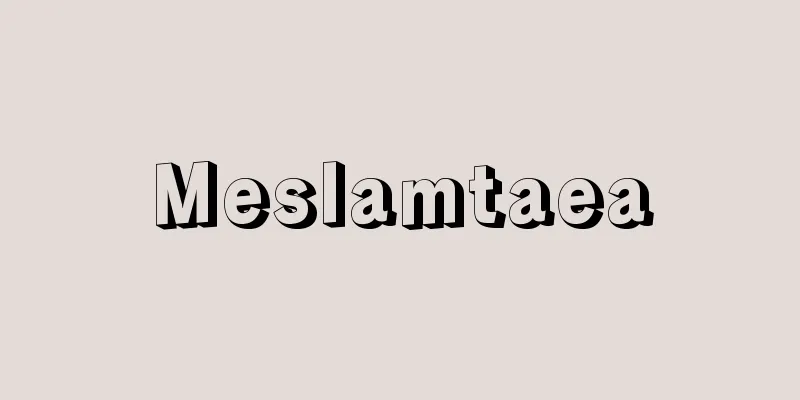Thousand Characters

|
This is a beautiful rhyming work consisting of 1000 Chinese characters arranged into four-character phrases by order of Emperor Wu of the Liang Dynasty in China (reigned 502-549). It was compiled by Zhou Xingsi (c. 470-521) of the Six Dynasties period. The same Chinese character is never used twice. It begins with "The heavens and the earth are eternal yellow, the universe is wild" and ends with "Those who call themselves word helpers are Yan Sai Hou Ya." Although there was already a collection of basic characters written in well-written sentences for beginners to learn Chinese characters, such as the "Qiujuhen" by Shiyou of the Han dynasty, the "Thousand Characters Classic" surpassed them with its refined style and content, and was widely used as a Chinese character textbook and calligraphy model from the 6th century to the beginning of the 20th century. It is said that Emperor Wu of the Liang dynasty collected characters from the "Thousand Characters Classic" in the handwriting of the calligrapher master Wang Xizhi, had them copied, and gave them to his sons, and a copy of Wang Xizhi's calligraphy, the "True Cursive Thousand Characters Classic" (written in both regular and cursive script), which is said to have been copied by the monk Chiei of the late Six Dynasties, has been passed down to Japan as an authentic copy. The account in the Kojiki that Wani of Baekje presented the Analects and the Thousand Character Classic in the 16th year of the reign of Emperor Ojin is hard to believe as it stands, but it does show that the Thousand Character Classic was highly valued in Japan from an early stage. [Hisao Hirayama] "The Complete Calligraphy Collection, Volume 5" (1957, Heibonsha) " Ogawa Tamaki and Kida Akiyoshi's Annotated Thousand Character Text" (1984, Iwanami Shoten) ©Shogakukan "> The Thousand Character Classic (1) ©Shogakukan "> The Thousand Character Classic (2) Source: Shogakukan Encyclopedia Nipponica About Encyclopedia Nipponica Information | Legend |
|
中国、梁(りょう)の武帝(在位502~549)の命により、1000の漢字を四字句からなる美しい韻文に編んだもの。六朝(りくちょう)時代の周興嗣(しゅうこうし)(470ころ―521)撰(せん)。同じ漢字を二度と用いることがない。「天地玄黄、宇宙洪荒」(天地は玄黄なり、宇宙は洪荒なり)に始まり、「謂語助者、焉哉乎也」(語助(ごじょ)と謂(い)う者は、焉哉乎也(えんさいこや)なり)に終わる。初学者の漢字学習用に、基本的な漢字を集めて調子のよい文章を綴(つづ)ったものとしては漢の史游(しゆう)の作という『急就篇(へん)』などがすでにあったが、『千字文』は洗練された文体と内容によってそれらを圧倒し、6世紀から20世紀の初めに至るまで、漢字の教科書ならびに習字の手本として、広く用いられた。梁の武帝は書聖王羲之(おうぎし)の筆跡から『千字文』の字を集め、模写させて、皇子たちに与えたといわれ、六朝末の僧智永(ちえい)が王羲之の書を模写したという「真草千字文」(楷書(かいしょ)、草書の二体で『千字文』を書いたもの)の真跡かとみられるものが日本に伝わる。応神(おうじん)天皇16年に百済(くだら)の王仁(わに)が『論語』と『千字文』を献上したという『古事記』の記事はそのままは信じられないが、『千字文』が日本でも早くから重んじられたことを物語っている。 [平山久雄] 『『書道全集 第五巻』(1957・平凡社)』▽『小川環樹・木田章義著『注解 千字文』(1984・岩波書店)』 ©Shogakukan"> 千字文(1) ©Shogakukan"> 千字文(2) 出典 小学館 日本大百科全書(ニッポニカ)日本大百科全書(ニッポニカ)について 情報 | 凡例 |
<<: Tank - Sensha (English spelling) tank
Recommend
Wake no Matsuna
Born in Enryaku 2 (783), Nara Died September 27, 8...
Woody, CD (English) WoodyCD
…It was found that during this conditioned escape...
Matching seal - Matching seal
This refers to a mark attached to weapons and equ...
Kairan - Kairan
…Tatsai (塌菜) is also called Tak Tsai or Tak Choi,...
Shima [Hot Springs] - Shima
A national health resort hot spring located in Nak...
Rǎzboieni (English spelling) Razboieni
…He then refused to pay tribute to the Sultan, an...
Northern faction
...If we consider jiuta in the narrow sense to be...
Kiboron, M.
…After working as a horse trainer and a lithograp...
Anna Perenna
The ancient Roman goddess of the cycle of the year...
Masakoto Sano
Year of death: 4/4/1784 (5/21/1784) Year of birth:...
Grimm, WC (English spelling) GrimmWC
…Brothers of Germanic philologists famous for the...
Freer, CL (English name) FreerCL
...The first half of this period was focused on t...
Pasuruan - Pasuruan (English spelling)
A port city in eastern Java, Indonesia. It faces ...
Shoal
… abyssal plain plain - a flat, gently sloping, o...
Lump charcoal - Kaitan
〘 noun 〙 A large lump of coal. It refers to coal w...









